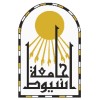
Effects of the Action Observation Therapy and Robotic Rehabilitation on the Upper-Limb Motor Function...
StrokeThis protocol will investigate the effects of action observation therapy and robotic rehabilitation on upper extremity motor functions in subacute stroke patients. Firstly, for this purpose, conventional rehabilitation approaches will take 60 minutes before both treatment methods in stroke patients. The upper-limb conventional rehabilitation program will be applied to all patients according to their individual needs (60x3x8 minutes/day/week). This program will consist of purposeful clinical exercises with a physiotherapist. After the conventional rehabilitation, one of the groups will receive action observation therapy, while the other will receive robotic rehabilitation. Both additional treatment methods will also be applied for 60 minutes. Treatment durations of both additional treatments are the same (60x3x8 minutes/day/week). Assessments will be made three times (Beginning, 4th week, 8th week).

Biofeedback as an Adjunctive Treatment for Post-stroke Dysphagia
DysphagiaRehabilitation1 moreThe aim of the study is to evaluate whether the effect of biofeedback treatment is more effective than a control treatment in the recovery of dysphagia. This study will be a multicentric randomized, single-blind controlled study. The investigators intend to recruit 100 patients who have suffered a stroke and have dysphagia. Fifty patients will undergo training with bio-feedback (experimental group) and the other fifty patients will undergo standard training, using only verbal feedback rather than visual feedback (control group). Our hypothesis, based on the results obtained in some previous studies, is that in the control group the efficacy of the treatment will be lower in the absence of immediate visual feedback of strength, timing, coordination and efficacy of the swallowing act.

PBBT and WBV Effect on Balance and Gait in Stroke.
StrokeThe goal of this clinical trial is to compare the effects of perturbation based balance exercises with whole body vibration training in sub-acute stroke patients and to evaluate their effects on balance, and gait. The main aim to : To evaluate their effects on balance, and gait. Comparison of these rehabilitation protocols and identify the more efficacious treatment. Participants will perform perturbation based balance training and whole body vibration therapy to improve balance and gait. If there is a comparison group: Researchers will compare both groups to see both interventions effects.

Human BCMA Targeted T Cells Injection(BCMA CAR-T)for Subjects With R/R MM
Multiple MyelomaA Phase Ⅱ Clinical Study Evaluating the Efficacy and Safety of Human BCMA Targeted T Cells Injection(BCMA CAR-T) Therapy for R/R MM. Patients will be given a conditioning chemotherapy regimen of fludarabine and cyclophosphamide followed by a single infusion of BCMA CAR+ T cells.

Elimination of Minimal Residual Disease After Transplant
Multiple MyelomaThis is a single-center, single-arm, phase II study that will enroll multiple myeloma (MM) patients with persistent bone marrow minimal residual disease (MRD) post autologous stem cell transplant (ASCT) irrespective of the International Myeloma Working Group (IMWG) response.

Identifying Optimal PEEP After Lung Transplantation
Lung Transplant; ComplicationsPrimary Graft DysfunctionLung Transplantation (LuTX) is the curative treatment for selected patients with end-stage lung disease. Primary Graft Dysfunction (PGD), a specific form of respiratory failure occurring within the first 72 hours after graft reperfusion, represents the most common complication after LuTX. Actual recommendation regarding management of mechanical ventilation of the lung graft immediately after LuTX are based only on opinion experts and not on clinical trials. Optimization of Positive End-Expiratory Pressure might contribute to both prevention and treatment of PGD. In this interventional single-center non-pharmacological study (with medical device), in the immediate postoperative period of patients who are undergone LuTX, we will evaluate the effects of varying levels of PEEP upon: - lung and chest wall mechanics, - intrapulmonary shunt fraction; - distribution of ventilation and perfusion; - gas exchange. The final aim is to find the optimal level of PEEP in this patient's cohort

Satralizumab in the Treatment of Pulmonary Arterial Hypertension (SATISFY-JP Trial)
Pulmonary Arterial HypertensionExamine the efficacy of satralizumab in patients with pulmonary arterial hypertension (PAH) with immune-responsive phenotype serum interleukin-6 (IL-6) ≥ 2.73 pg/mL who have an inadequate response to existing drugs.

The Effect of Pharyngeal Electrical Stimulation on Peripheral Biomechanical Aspects of Deglutition...
Dysphagia Following Cerebrovascular AccidentDysphagiaThe goal of this clinical trial is to clarify which biomechanical aspects of swallowing are altered by Pharyngeal Electrical Stimulation (PES) in stroke patients and healthy volunteers. The peripheral effect of PES intervention on the biomechanics of swallowing will be evaluated with High Resolution Manometry Impedance (HRMI).

Study Assessing the Efficacy and Safety of a Personalized Monotherapy Regimen of Brolucizumab in...
Macular Polypoidal Choroidal Vasculopathy (PCV)This study is a 60-week, two-arm, randomized, open-label, active-controlled, multi-center study in patients with Polypoidal choroidal vasculopathy (PCV) who have not previously received anti-Vascular endothelial growth factor (VEGF) treatment.

CSF Biomarkers in Idiopathic Intracranial Hypertension
Intracranial HypertensionAim of the study is to high lighten the rule of CSF biomarkers in early diagnosis of IIH and in follow up to reach to a definite clinically based decision if this patient will improved on medical treatment or that patient is in need for surgical intervention.
